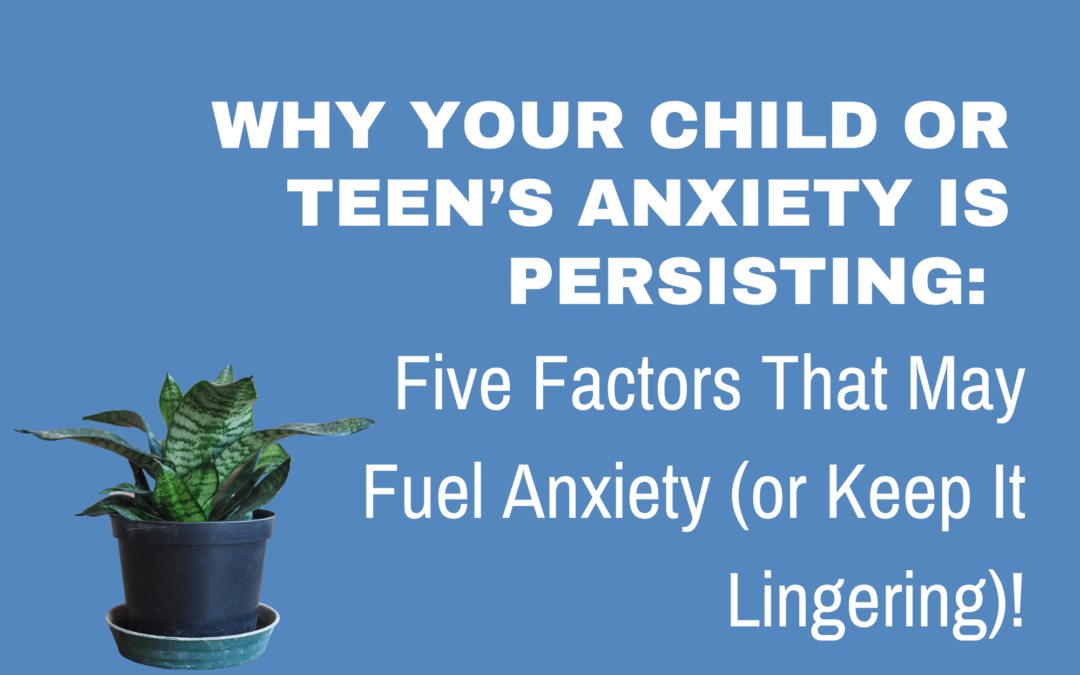
Why your Child or Teen’s Anxiety is Persisting: Five Factors That May Fuel Anxiety (or Keep It Lingering)!
Are you feeling frustrated, questioning whether anything truly works in alleviating your child or teen’s anxiety? Perhaps you’ve explored numerous avenues, from therapy sessions to consuming literature, podcasts, and even fervently following child and teen experts on social media, yet the struggle persists.
I get it. Been there, done that. One of the most eye-opening revelations is that some of the well-intentioned actions we, as parents, believe will help may actually be exacerbating the issue. It’s a paradox that demands attention.
Anxiety, with its intricate nature, often turns our natural, loving responses on their head when it comes to helping our children navigate anxious situations. Here are five common practices that might unknowingly be fostering anxiety in your child or teen—and the good news is, armed with this awareness, you can begin crafting a targeted Anxiety Game Plan.
- 1. Safety Tricks- “I am ONLY going to school if you drive me” –
Safety tricks involve creating conditions to make a feared situation feel safer. While your child or teen may still engage in the feared activity, such as going to school, the reliance on safety measures reinforces the perception that the situation is genuinely threatening. This hinders the crucial learning experience of “I can do hard things,” and instead fostering a belief in “I can’t do hard things unless…”
- 2. Reassurance Seeking- “Is there going to be a tornado? Did you lock the doors? Are you mad at me?”
Reassurance seeking is a normal part of a child’s learning process, but when it becomes tied to anxiety and unnecessary information, it can be counterproductive. Responding with reassurance in these situations perpetuates the idea that the fear is justified, hindering the child’s ability to manage anxiety independently.
- 3. Avoidance- “I am NOT going to that birthday party” –
Classic avoidance is a common coping mechanism for anxiety, but its long-term consequences can be detrimental. Continual avoidance reinforces the belief that the feared situation is insurmountable, preventing the child from gaining alternative positive experiences related to their fears.
- 4. Rumination
Rumination involves repetitively going over unsolvable problems mentally or verbally. Contrary to problem-solving, rumination often leads to unproductive outcomes. Recognizing rumination as a behavior rather than an automatic process empowers parents to guide their children away from this counterproductive cycle.
- 5. Accommodation- “ I will sleep in bed with you. I will make you a special meal. I will drive you to school. I will email your teacher for you.”
Accommodation refers to actions taken by others to alleviate someone’s anxiety. While it’s a natural expression of care, when it comes to anxiety, accommodation has been correlated with heightened anxiety in children. This is the opposite of what we are trying to achieve. Understanding this correlation offers parents the hope and insight that reducing accommodation can positively impact their child’s anxiety levels over time.
Now armed with the knowledge of these five anxiety-fueling factors, you can embark on a journey to implement various strategies to support your child or teen. For more helpful information, follow us on social media and sign up for our newsletter! www.calmmindcbt.com/weeklyemail
